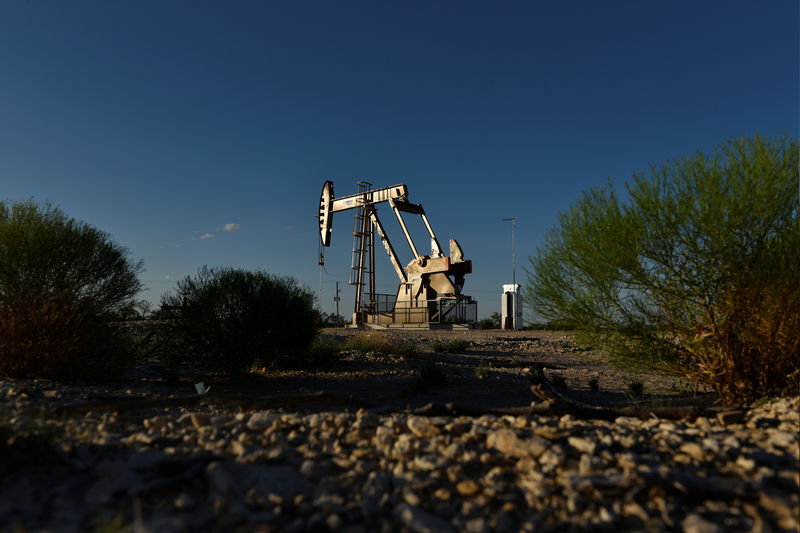By Sumita Layek
(Reuters) - Oil prices are expected to be range-bound near current levels this year as slowing economic growth and a protracted trade dispute curb demand, a Reuters monthly poll showed, squeezing gains stemming from production curbs and Middle East tensions.
A survey of 54 economists and analysts forecast Brent crude (LCOc1) would average $67.47 a barrel in 2019, little changed from the $67.59 seen in last month's poll and compared with the $65.88 average so far this year.
On Wednesday, Brent was trading near $65 a barrel.
"World demand remains lacklustre and is subject to significant risks of downside revisions due to trade war concerns and disappointing macroeconomic data," Intesa Sanpaolo (MI:ISP) analyst Daniela Corsini said.
Earlier in July, the Organization of the Petroleum Exporting Countries and allies including Russia agreed to extend output cuts until March 2020, seeking to prop up crude prices.
While the group's agreement is seen putting a floor under prices, analysts say its success in balancing the market is likely to diminish into next year.
The effectiveness of OPEC production cuts "is starting to wane and will have a limited impact on balances heading into 2020", Edward Bell of Emirates NBD bank said.
"As the market is increasingly moving off non-supply-related issues, OPEC's impact on the market will weaken."
OPEC, the U.S. Energy Information Administration and the International Energy Agency downgraded their demand forecasts in July, citing a slowing global economy amid a U.S.-China trade spat and surging U.S. production.
GRAPHIC: Oil prices versus OPEC output - https://tmsnrt.rs/2MBtCUz
Analysts in the Reuters poll forecast global demand to grow by 0.8–1.4 million barrels per day (bpd) in 2019, versus the 0.9–1.3 million bpd projected in June, and continue to see emerging markets in Asia as the main drivers of demand.
"For oil to strongly rally, the market needs a positive economic catalyst, either in the form of significant progress in trade talks or central bank easing," said Harry Tchilinguirian, global head of commodity market strategy at BNP Paribas (PA:BNPP).
While the market is likely to have surplus supply this year and next, any flare-ups in the Middle East could trigger a price rally, analysts said.
"If the Strait of Hormuz were to be completely closed, about 20% of global oil supply could be lost," said Oliver Allen, economist at Capital Economics, referring to a waterway between Oman and Iran that is the world’s main conduit for oil.
Friction between Iran and the West escalated after Iranian commandos seized a British-flagged oil tanker in the Gulf this month in what was seen as retaliation for the capture of an Iranian tanker by British forces near Gibraltar.
Industry experts also see a rise in U.S. production for the rest of 2019 and 2020 as infrastructure bottlenecks are resolved and new pipelines from the Permian basin in west Texas and New Mexico come online.

The survey predicted U.S. crude futures (CLc1) would average $59.29 per barrel in 2019, compared with last month's $59.30 forecast.